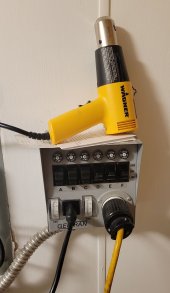When running a hair dryer my inverter makes this crazy resonating sound. It only happens with the hair dryer and it only happens when the hair dryer is on the low setting. No other loads i've tested, regardless of wattage, cause the inverter to make this sound. The inverter has a transformer. (EG4 6000) And is off-grid (no AC input) It is not fan noise - it is deep, whawahwahwahwannnnggg.
The advise i've received so far is:
More about the setup:
15kwh of EG4 batteries connected to a single 240v EG4 6k. Charged by 5.3kw of solar.
AC out from inverter is wired to a single load center that is connected to a GEC and has a Neutral/Ground bond.
There is no "balancing" on the circuits. I only have 2 and the issue occurs when I plug the hair dryer into either.
The advise i've received so far is:
- Don't run the hair dryer on low. ( we don't )
- Call an electrician?
- It's probably the fan. ( it's not )
- Transformers are weird, sometimes they make weird sounds.
- You should have gone with Schneider.
More about the setup:
15kwh of EG4 batteries connected to a single 240v EG4 6k. Charged by 5.3kw of solar.
AC out from inverter is wired to a single load center that is connected to a GEC and has a Neutral/Ground bond.
There is no "balancing" on the circuits. I only have 2 and the issue occurs when I plug the hair dryer into either.





![20230410_163913[1].jpg](/data/attachments/144/144158-190839ad846d99f4d43087f4a7278201.jpg)